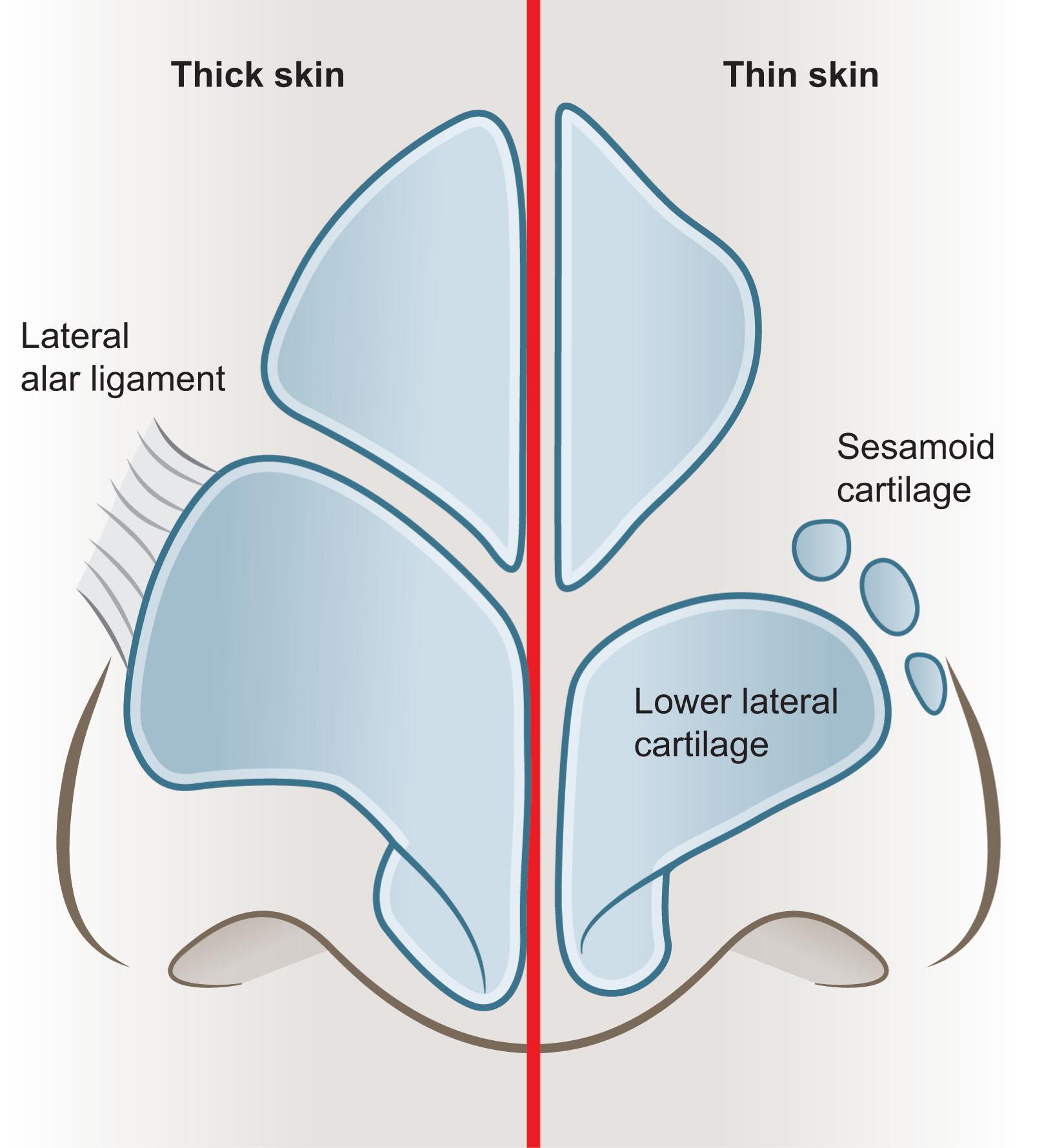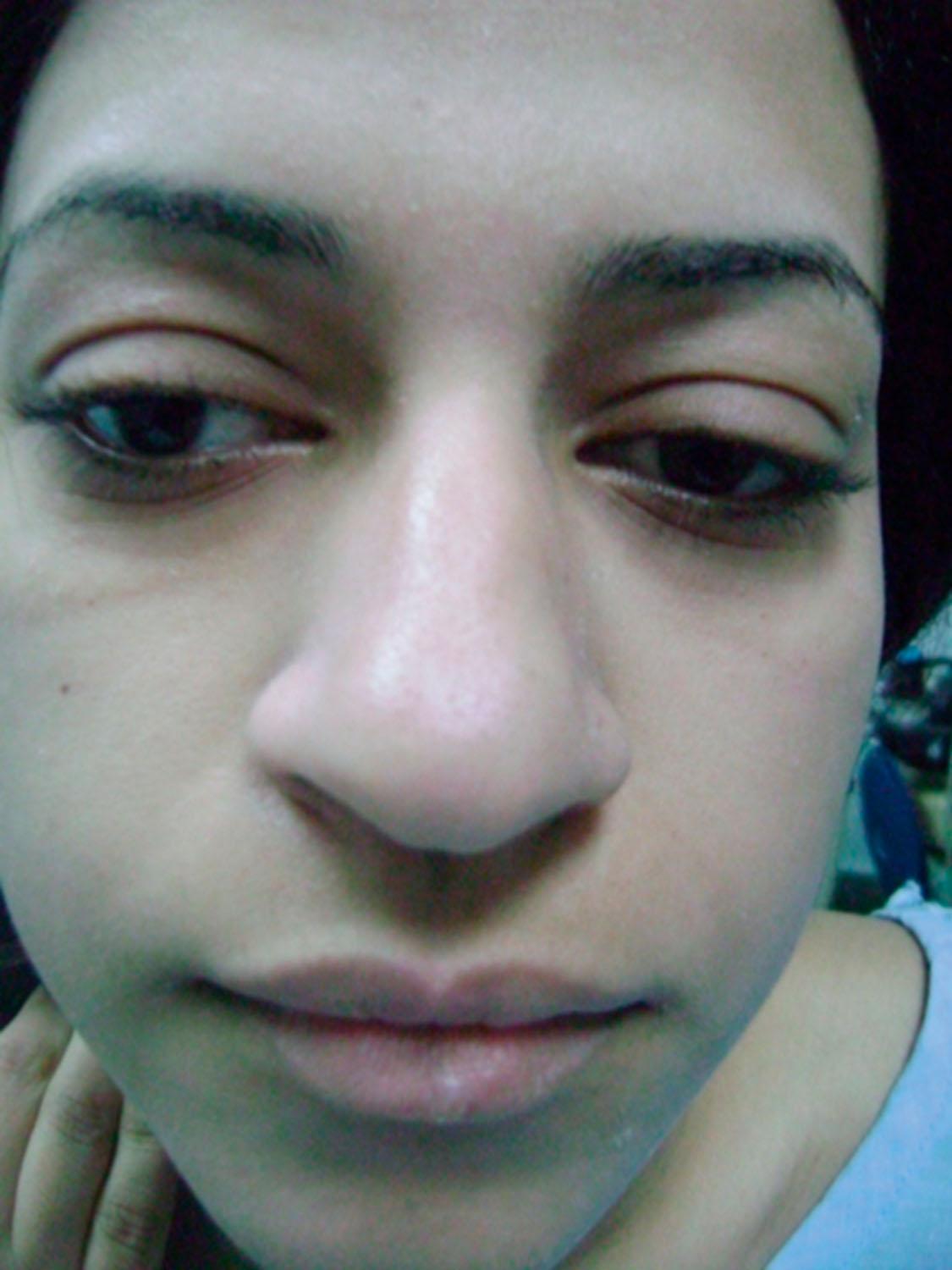Physical Address
304 North Cardinal St.
Dorchester Center, MA 02124
The predominant characteristics in thick-skinned patients seeking rhinoplasty are a bulbous nasal tip, poor definition of the different nasal subunits, and persistence of postoperative swelling if compared with normal- or thin-skinned patients, leading to inferior esthetic outcomes.
There are four main anatomical findings with varying degrees of severity that are peculiar to these kinds of noses:
The skin is very thick with strong memory , which prevents it from redraping over the newly modified cartilages.
The cartilages are thin and weak with lesser contribution to the shape of the nose.
The lower lateral cartilage is broad and saucer-like with a lateral fibrous attachment ( lateral alar ligament ) replacing the minor sesamoid cartilages described in the literature in White patients. This lateral fibrous band spans between the lateral part of the lower lateral cartilage and the subcutaneous tissues deeply to the nasolabial line ( Fig. 72.1 ).

There is a thick subcutaneous fibrofatty layer adherent to the lower lateral cartilage, which, during dissection of the cartilage, comes out easily with it; the thinner the cartilage, the thicker this fibrofatty layer.
All these factors lead to failure of distinction between the different subunits of the nose ( Fig. 72.2 ), so the tip is amorphous and bulbous and the lateral alar ligament blurs the distinction between the nasal sidewall subunit and the alar lobular subunit.

Three patients with two different degrees of skin thicknesses (mild, moderate and severe).
Two patients with thick skin noses the first is 25 years old female with ill definition of the nasal subunits and bulbous tip and mild nasal hump, the second has in addition a very long nose with severe nasal hump.
The first is a 25-year-old female with mildly thick skin , a long, ill-defined tip, and nasal subunits.
The second is a 42-year-old female with very thick skin and a very wide dorsum and tip.
Become a Clinical Tree membership for Full access and enjoy Unlimited articles
If you are a member. Log in here